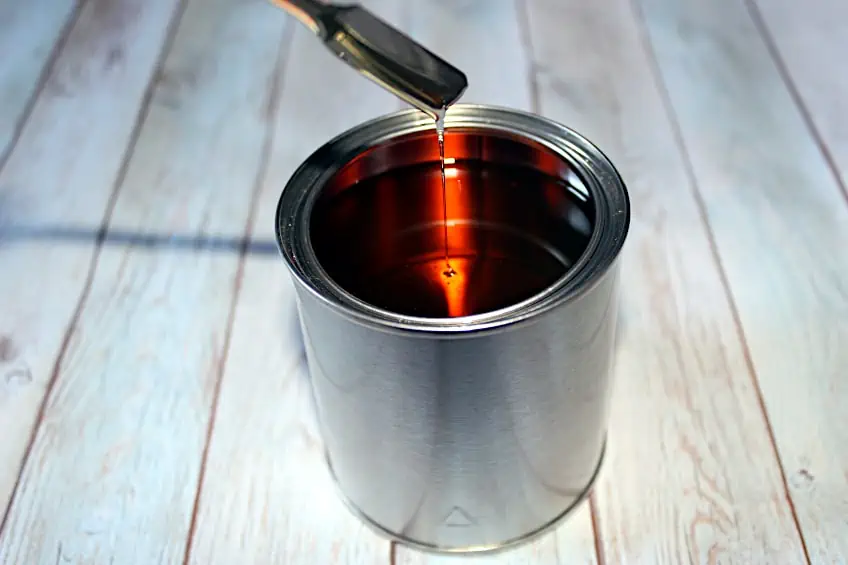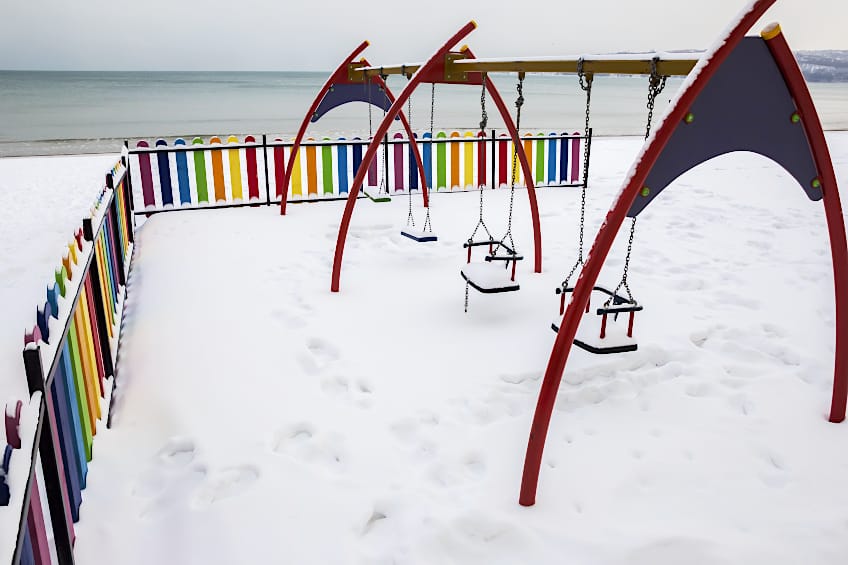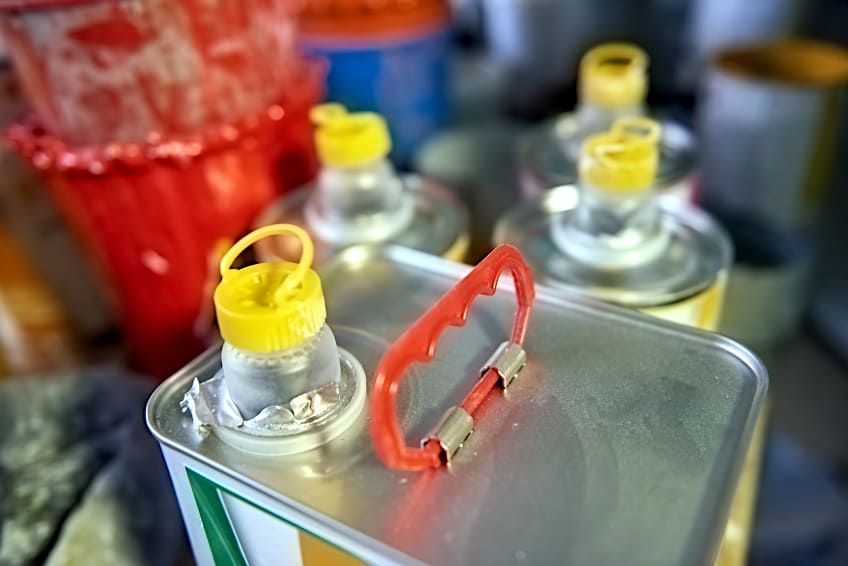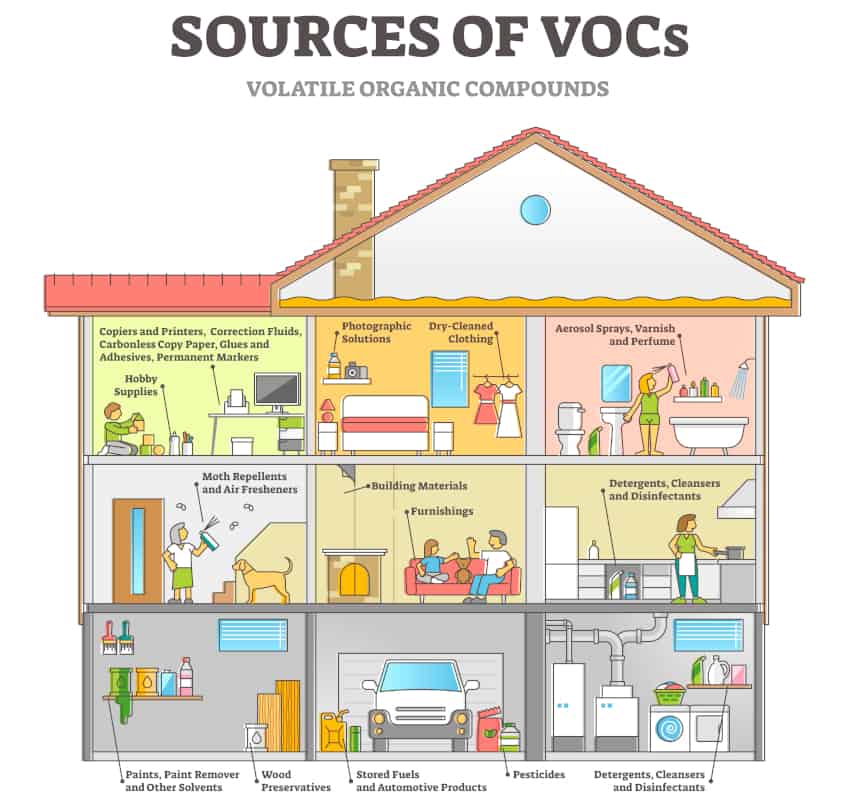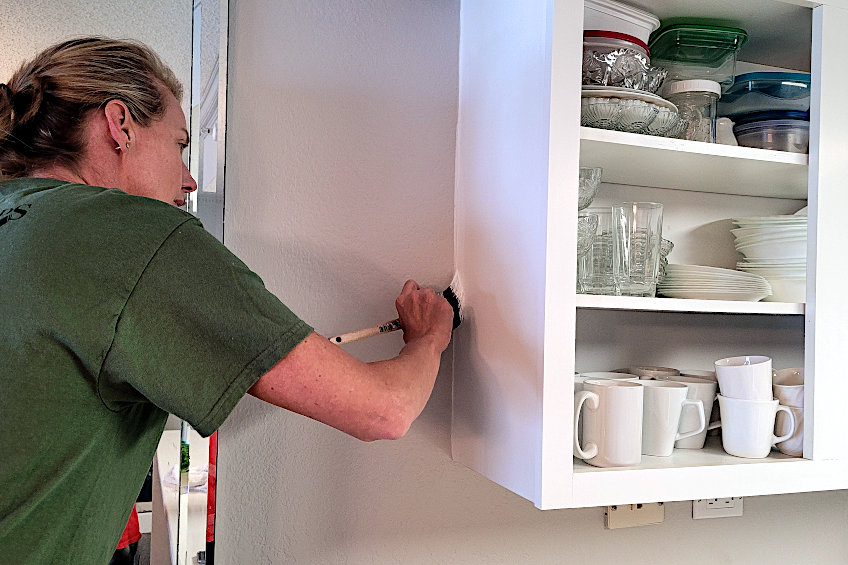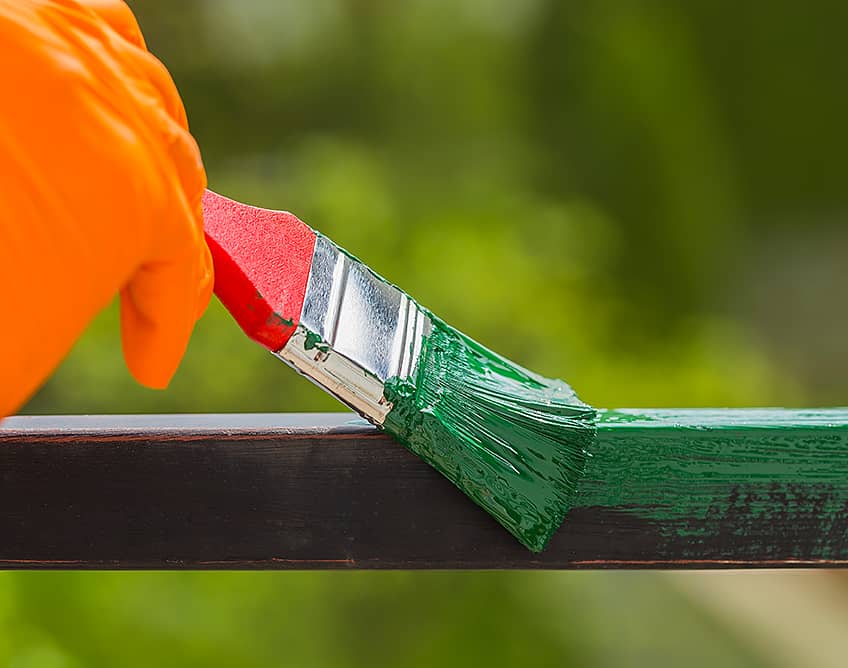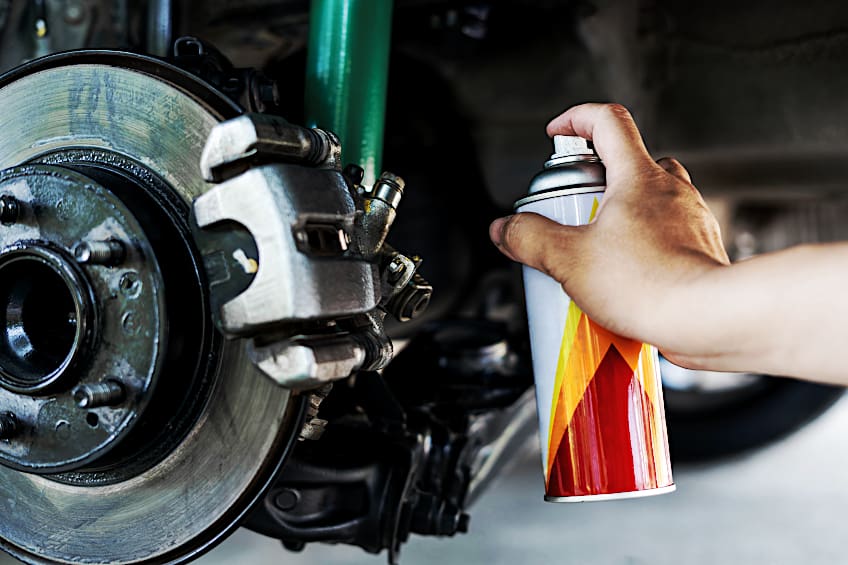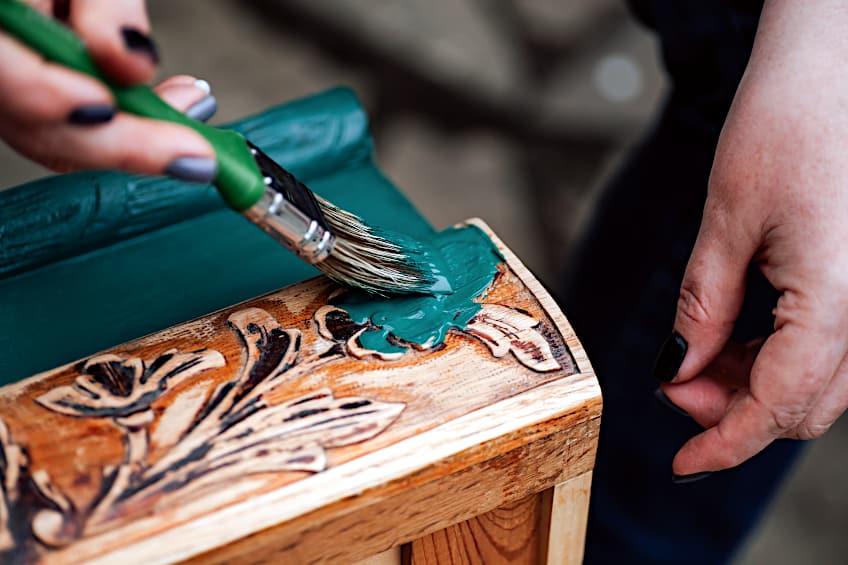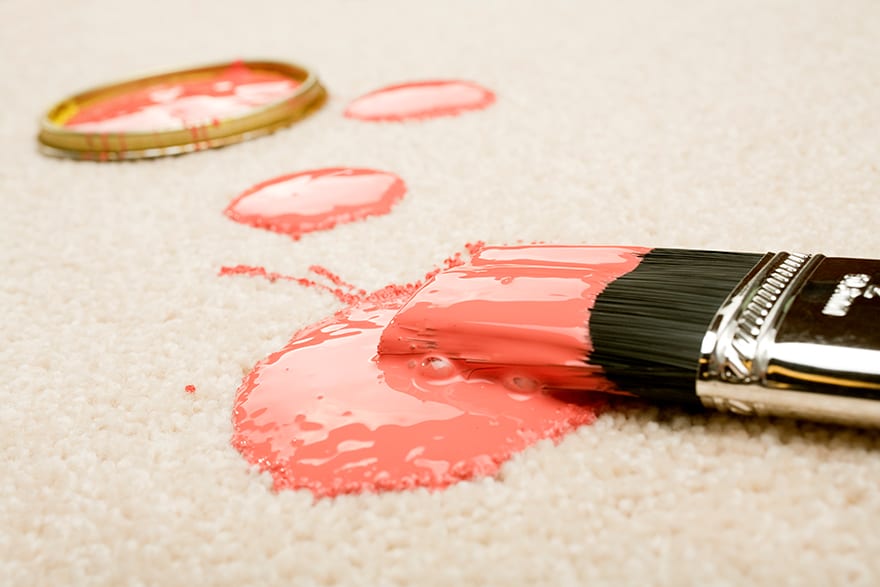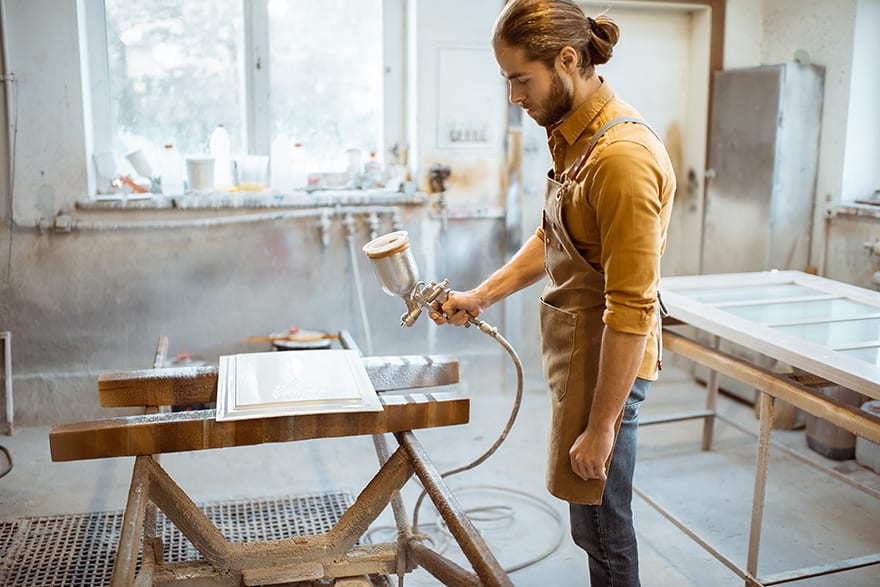What Is Alkyd Paint? – Oil-Modified Polyester Paints Guide
This post may contain affiliate links. We may earn a small commission from purchases made through them, at no additional cost to you. You help to support resin-expert.com
Back in the day, the only options you had when it came to the paint on sale at your local paint store you could choose between oil-based and water-based paints. These days, there are far more paint types, finishes, and textures to choose from. One of the most durable coatings is alkyd-based paint. However, most people will be unfamiliar with this types of paint and how and where to apply it. With that being said, what is alkyd paint? Let’s have a look at what alkyd paints are, what they are made of, what they are used for, and what makes them a unique paint type.
Table of Contents
What Is Alkyd Paint?
To understand what alkyd-based paint is you should first understand that all paint types are essentially made of binder that is combined with colorant and sometimes, solvent. When paint is applied to a surface the binder will harden once the solvent evaporates, leaving behind a colorful surface coating. Paints are usually named according to the type of binder they use as their base. Oil-based paints have a binder that consists of linseed or other types of oil. Acrylic paints have an acrylic polymer base, and latex-based paints have a water-latex base. Fairly straightforward stuff, right? What is the base for alkyd-based paints then?
Alkyd-based paints usually consist of an alkyd polymer that has been slightly diluted using a thinner. Some oil-based paints actually use alkyd resins and solvents in their composition, which is part of what provides the shiny effect that oil-based paints are known for. Does this mean that oil and alkyd paints are the same thing?
Not really, alkyd-based paints are the modern iteration of old oil-based paints, with the key difference being that alkyd paints do not contain linseed or tung oil in their composition. Alkyd-based aren’t any better for the environment as they contain about the same amount of VOCs (volatile organic chemicals) as their oil-based counterparts do.
History of Alkyd Paints
Alkyd paints were invented around the same time as conventional oil-based paints. They came about in the 1920s and were considered to be an integral part of many industries thanks to their inherent properties. These paints were used for a very long time in the manufacturing industry and remain widely used today in many industries all over the world. They do have a number of drawbacks though, which is why alkyd-based paints are not used in everyday applications such as the painting of homes and businesses.
Alkyd paints have largely been relegated to industrial applications, which makes sense considering water-based and acrylic-based paints are far more affordable and readily available by comparison. You are most likely to find alkyd-based paints on marine equipment, due to its extreme durability and weather-resistance.
What makes alkyd paints so popular in these industries? Well, alkyd-based paints were found to be incredibly durable upon their invention and were therefore seen as the perfect surface coating for highly trafficked surfaces, and environments where the probability of surfaces experiencing things like impact, abrasion, and even chemical damage was high.
These days alkyd paints are something of a relic. After all, we have paints that are far better for the environment like acrylic enamel and pure enamel paints. These offer the same degree of durability as alkyd-based paints once did, and even when using less durable paint types such as latex paints, protective layers like resin sealers and epoxy coatings exist to ensure longevity.
What Is Alkyd Paint Used for Today?
Even though alkyd paints aren’t as popular as they were, they are still pretty widely used and are seen as a cornerstone of a number of industries. What is alkyd paint used for today then? Alkyd paint is generally used in highly trafficked areas such as railings, stairs, hallways, and production facilities, and basically, any application where lots of wear and tear are expected.
While most professionals will advise against applying alkyd paint indoors due to the chemicals and fumes emitted by the paint while it cures, once the paint dries it is pretty safe. Therefore, these paints are often used to create durable markings in playgrounds, indoor activity areas, and on children’s outdoor play equipment as they will not scuff or lift, and will be weather-proof.
One of the biggest selling points of alkyd-based paints is the fact that they can be applied directly over existing finishes without the need to strip or sand. That’s right, you can apply alkyd paint directly over an existing latex or acrylic finish without any preparation, although the finish would likely look a lot better if you did some preparation beforehand.
As you can see, alkyd paint is extremely versatile in addition to being very hard-wearing. It is resistant to impact, abrasion, moisture, and even chemical damage, making it the go-to paint for a number of applications in various industries all over the world. While it might not be the best tool for every job, alkyd point has proven to be indispensable in industries where it is commonly used.
Different Types of Alkyd Paint
Now that we know what alkyd paint is, let’s have a look at some of the different types of alkyd-based paints there are available. Different types of alkyd paint are used for different applications and have inherent properties that make them better suited for certain uses. Let’s have a look at these different types of alkyd paint and their intended applications.
Oil-Based Alkyd Paint
Oil-based alkyd paints are the type we have been looking at until now. As we mentioned previously, these are highly durable and are used for applications where an extremely robust surface coating is needed. These paints retain their sheen and color for a really long time and generally require very little maintenance once they have dried and cured completely.
The downside of this paint is that you will have to use solvents like mineral spirits or alcohol to dilute it and clean your equipment after painting.
Water-Based Alkyd Paint
Water-based alkyd paints are a toned-down version of oil-based alkyd paints. They don’t contain as many VOCs, are easy to clean up with just some soap and water, and can be used indoors without any safety concerns. They retain the trademark sheen and durability of conventional alkyd paints with far fewer nasty fumes and are often available in even more color options.
Solvent-Based Alkyd Paints
Solvent-based alkyd paint is what most people refer to when asked: “What is alkyd paint”. This is a specialized paint type that is specifically used to coat metal surfaces. These paints are capable of preventing surfaces from rusting when imparting incredibly vibrant and long-lasting finishes. They do all of this while retaining an impressive level of elasticity and gloss retention.
The downside of these paints is that they are high in volatile organic compounds (VOC’s), so their fumes can be very bad for your health.
Comparing Alkyd Paint Types
There isn’t a tone of difference between the different alkyd paint formulas on the market today. Oil-based alkyd paints tend to be used less than water-based and solvent-based variants, but they are highly durable and have a niche market. Many industries depend on this alkyd paint type for internal and external surface coatings.
Water-based alkyd paints are somewhat more user and environmentally friendly when compared to oil and solvent-based alkyd paints. They are safe for use indoors and are therefore commonly used on things like kitchen countertops, cabinets, bed posts, and even interior walls. They can be quite expensive though, but the same can be said for all three alkyd paint variants.
Solvent-based alkyd paints have a really special niche application and don’t have much use outside of painting metal surfaces in highly trafficked environments. With that being said, they are extremely effective in their intended application and are a good substitute for self-priming metal paints should the situation demand it.
As you can see, all of these paints are catered toward pretty specific applications. While they cannot be used interchangeably with one another (or many other paints for that matter), they fulfill their intended purposes fairly well. However, there are less hazardous and marginally cheaper paints on the market these days, which has made oil and water-based alkyd paints decline in popularity somewhat.
Characteristics of Alkyd Paint
Just like oil-based paints and acrylic-based paints have characteristics that are unique, so do alkyd-based paints. The inherent characteristics of paint usually funnel the use of said paint toward a specific industry or application, which we’ve mentioned above. Knowing this, let’s have a look at some of the inherent characteristics of alkyd-based paints in order to justify their niche applications.
Drying Time
The drying time of a paint is almost always dependent on the temperature and humidity of the surrounding environment. However, the average drying time of alkyd-based paints is about six to eight hours until it is dry to the touch.
The average full cure time is around 16 hours at which point additional coats can be applied. This is a bit faster than some other paint types.
Durability and Resistance
Alkyd-based paints are widely known for their inherent durability. What is alkyd paint resistant against? Alkyd paint is capable of withstanding repeated impact, abrasion, chemical damage, moisture damage, heat damage, insect infestation, and scuffing. This is one of the primary reasons that alkyd-based paints are still widely used today.
Gloss and Sheen
Alkyd-based paints are closely related to conventional oil-based paints, and as a result, they have inherited the trademark sheen that oil-based paints are known for. Oil-based paints don’t have a super high gloss finish, but the effect is definitely noticeable, making both oil and alkyd-based paints instantly recognizable by finish alone.
Color Retention
When it comes to color retention and longevity, alkyd paint is in a class of its own. Alkyd paints retain their color notoriously well, leaving you with a surface coating that’s sure to last for years. The sheen from essentially any variation of alkyd paint should last for over a decade (if not longer) so choosing this paint type work workpieces that will be based outdoors is almost always a good call.
Coverage and Application
Regardless of how durable a paint is or how pretty its finish looks, if it’s hard to use and doesn’t give you decent value for money then many people will tend to avoid it. Thankfully, alkyd paint has excellent coverage and is really easy to use, regardless of whether you are applying it conventionally or using a paint sprayer.
Advantages and Disadvantages of Alkyd Paint
There is no such thing as the perfect surface coating. Every paint type has its respective advantages and disadvantages that you need to take into account before applying them to your workpiece. Let’s have a look at some of the advantages and disadvantages of alkyd paint so you can decide if it’s suited for your next project.
Advantages of Alkyd Paint
On the surface, alkyd paint has many advantages that one would look for in paint. For one, it is incredibly durable, being able to withstand scuff marks, impact, abrasion, heat, moisture, mold, and even insect infestation, all while retaining its color. There are some more plus sides to using this paint too though.
For one, alkyd paints are easy to apply. Thanks to the chemicals in its composition, alkyd paint can easily be applied using a brush and roller, or with a paint sprayer depending on your preference. This is great considering that it can be used in a wide variety of materials, and since it can be applied with a sprayer, large workpieces won’t be a chore to paint.
Alkyd paint also happens to get really good coverage. This means that you get great value for your money, but there is another advantage to this. While most paints require the use of two coats in order to have a consistent tone and finish across the surface of your workpiece, alkyd paints only require one coat, saving you a lot of time and energy.
Disadvantages of Alkyd Paint
As you can see there are many advantages to using alkyd paint. However, there are a few drawbacks you should know about before committing to using it. For one, if applied thinly and/or used on a surface that is subjected to harsh and frequent changes in temperature alkyd paint can become quite brittle, which isn’t ideal.
Alkyd paint uses a binder type that ensures form adhesion to the surfaces it’s applied to, but this isn’t always a good thing. Aside from water-based alkyd paint, solvent, and oil-based alkyd paint types can be really difficult to clean up when spilled. The removal of these paint types often requires the use of solvents and other chemicals.
Another disadvantage you might want to consider is that even though alkyd paint does not have a super long drying time (definitely not the longest of all paints) it can take some time to dry. This could count against you when working on time-sensitive projects, so take this into account if you are considering this paint type for your next workpiece.
How to Apply Alkyd Paint
Alkyd paint is relatively easy to use and does not require much preparation. Here are a few steps that you follow to ensure that the application of your alkyd-based paint goes off without a hitch. Remember that even though you don’t need to use a primer it does ensure that your finish will be evenly distributed and not blotchy.
Prepare Your Surface
To begin, clean the surface of your workpiece thoroughly with some soap and water, then allow it to dry completely. Once the surface is clean, sand the surface of your workpiece using some medium grit sandpaper until the existing finish has been removed. Once you’re done, remove any sanding dust from the surface of the workpiece using a clean cloth or some compressed air.
Once the surface has been cleaned it’s time to apply your primer. Stir your primer well and apply using a paintbrush or roller depending on your preference. Once the primer has been applied, allow it to dry for the time period suggested by the manufacturer before moving on to the painting process.
Paint Your Workpiece
As you can see there isn’t much difference between using alkyd paint and other paint types. To apply your paint, stir the paint well and pour some out into a painter’s tray. Next, get your brush and/or roller and begin applying your paint. We recommend working from one end of your workpiece to the other to ensure even and consistent coverage. If using a sprayer, remember to thin your alkyd paint and apply thin even coats.
While you can use your roller for the larger surface of your workpiece, we recommend using a brush for smaller sections as alkyd paint’s consistency can be quite thick depending on the brand and type you’re using. Once your workpiece has been painted completely allow the paint to dry for the time period recommended by the manufacturer before applying any additional coats (if any).
Now you know exactly what alkyd paint is, when it came about, what is used for, what types of alky paint are out there for you to use, why not try it out for yourself? Consider the advantages and disadvantages of the paint before making your choice and be sure to wear a face mask and gloves when working with paint like this.
Frequently Asked Questions
What Is the Difference Between Alkyd and Latex Paint?
Alkyd and latex paints tend to be mixed up with one another, but they are not the same. What is the difference between alkyd and latex paint then? Put simply, alkyd paint tends to be oil-based and produces a highly durable finish, while latex paint tends to be water-based and is more likely to scuff and suffer damage.
What Is Acrylic Alkyd Paint?
Acrylic alkyd paint is pretty much just what it sounds like. It is an alkyd polymer that has been modified to include acrylic in its composition. This paint type also commonly includes the use of solvent and coloring agents.
Is Alkyd Paint Safe to Use?
Alkyd paints and conventional oil-based paints are pretty much the same thing functionally. Like oil-based paints, alkyd paints tend to contain a lot of VOCs and therefore can be hazardous to apply indoors and aren’t very good for the environment.


